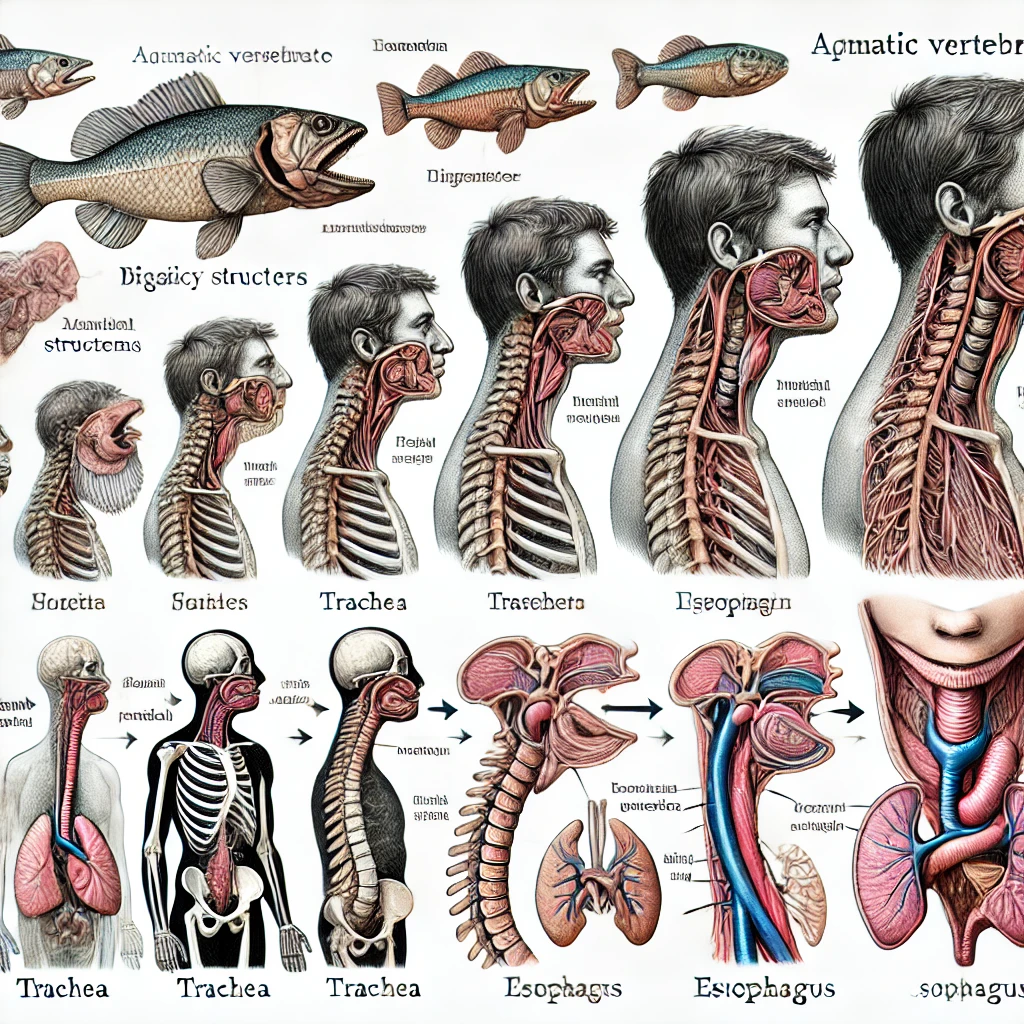The human throat is structured in such a way that the respiratory and digestive systems intersect, creating the risk of choking on food, because it was the best evolutionary option. This structure is the result of the overlap of respiratory and digestive functions in early vertebrates and can be seen as an evolutionary compromise.
On Earth, about one in 100,000 people choke on food stuck in their throats every year. This happens because the human respiratory system (airway) and digestive system (esophagus) intersect in the throat. Unlike humans, invertebrates such as insects and mollusks do not have a crossing structure and are not at risk of choking on food. What caused the human respiratory system to have such an unreasonable structure?
This question has long been a fascinating research topic for evolutionary biologists. How did the intersection of our respiratory and digestive systems come about, what evolutionary advantages did this structural feature provide, and how can we mitigate the risks it poses? To answer these questions, we need to take a closer look at the evolution of vertebrates.
The ancestors of vertebrates that lived in the ocean used sieve-like structures to filter out microorganisms from the water. Because they were so small, the oxygen dissolved in the water was able to flow freely to the depths of their bodies, so they didn’t need a separate respiratory system. As they grew larger, the sieve-like structures they used to filter their food also became respiratory, and eventually morphed into gills. In other words, part of their digestive system became responsible for breathing.
This early stage of evolution can still be seen in many marine organisms today. Fish and some amphibians still breathe through gills, and their structure is similar to that of our earliest ancestors. However, during the course of evolution, animals that came to land had to adapt to their new environment, which required major changes in their respiratory structure.
A part of the respiratory system was then modified and developed into lungs, which extended down the esophagus leading to the stomach. Meanwhile, the passageways for air to enter and exit the body changed from the nostrils to pierce the roof of the mouth and settle between the mouth and gills. This evolutionary process is illustrated by the structure of the respiratory system in lungfish.
As evolution continued, the intersection of the respiratory and digestive systems moved from just below the nostrils to deeper in the throat. As a result, the respiratory and digestive systems gradually separated as long as the head and throat remained unchanged, i.e., the initially long overlap of the respiratory and digestive systems gradually became shorter and shorter until there was only one point of intersection. This is the basic structure of the respiratory system found in higher vertebrates, including humans.
As the human respiratory system became more and more complex and sophisticated, various problems arose. In particular, modern lifestyles and dietary habits have accentuated these problems. For example, the habit of eating quickly or swallowing food and talking at the same time increases the chance of food entering the airway incorrectly. This is because the structure of the human throat is still the result of an evolutionary compromise.
Therefore, human choking on food is an evolutionary consequence of the positioning of the lungs that evolved past our vertebrate ancestors because it was the best option at the time. Evolution doesn’t necessarily work in the direction of creating an ideal, perfect structure. Evolution selects the best structure to adapt to a new environment, but that structure is not the same as the best structure that was created from scratch.

Therefore, evolution inevitably leads to the selection of compromise structures, and it can be said that it is a process of accumulating results in response to moment-to-moment needs. This is why the products of evolution often have irrational structures that don’t make sense to us, as in the case of the crossed airways and esophagus that cause suffocation. By understanding these structural problems, we can adopt better diets and lifestyles to reduce our risk, and we can also gain a deeper understanding of human biological evolution and its limitations.
Evolutionary compromises are found in many animals, not just humans. For example, giraffes’ long necks evolved to feed on the leaves of tall trees, but this makes it difficult for them to regulate their blood pressure. Another example is the human spinal structure, which has modified to adapt to upright walking, but this can lead to problems such as back pain. These examples show that evolution does not always provide optimal solutions, and sometimes imperfect compromises must be made for survival and adaptation.
This understanding has important implications for modern medical and biological research. By understanding the structure and function of the human body from an evolutionary perspective, we can better understand the causes of disease and how to treat it. For example, it is important to develop the habit of eating slowly and not swallowing food while talking to prevent choking accidents. Learning how to quickly resolve airway obstruction in an emergency can also be an important preventative measure.
In conclusion, the human throat structure is an evolutionary compromise, with imperfect and sometimes dangerous characteristics. However, with this understanding, we can minimize the risks through better lifestyle habits and preventative measures. Understanding the complexities and imperfections of evolution will play an important role in protecting our health and safety.